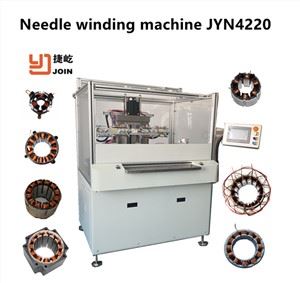
4 spindle Brushless motor stator needle winding machine. Various kind of blushless motor stator needle winding, such as washing machine motor stator,sewing machine motor, stepper motor, Pump motor stator needle winding and other BLDC motor needle winding.
Read More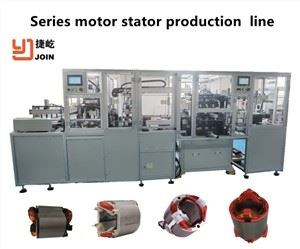
Series motor stator production line. Stator auto feeding,auto load/unload,auto paper insert,auto winding,auto marking.
Read More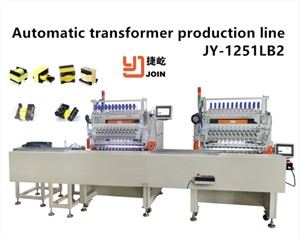
Customized transformer coil production line. For various kind of EI,EE ,EF and PQ transformer coil winding+taping.
Read More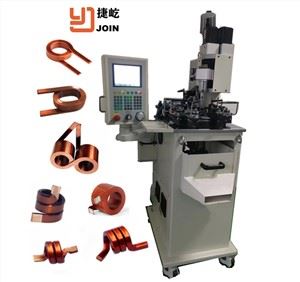
Full-auto winding machine for bobbinless coil,air inductor coil,flat wire winding. Machine working video on YouTube link
Read More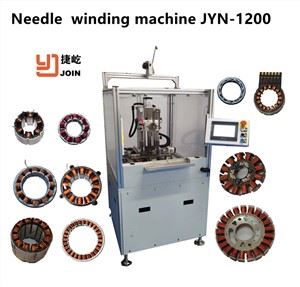
Multifunctional needle winding machine for BLDC motor stator&rotor
Read More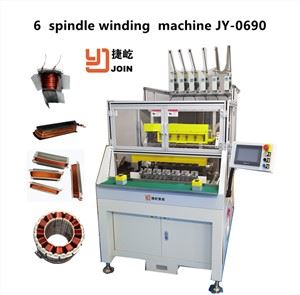
E-driver motor segment tooth winding. For various kind of segment motor core ,mainly for servo motor 40#,60#80#90# segment tooth winding.
Read More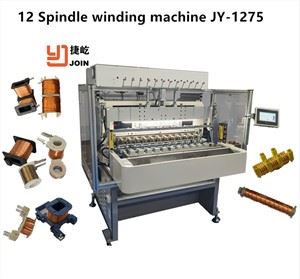
12 spindle wire winding machine. Mainly for various kind of solenoid coil winding, synchronous motor coil and ignition coils winding.
Read More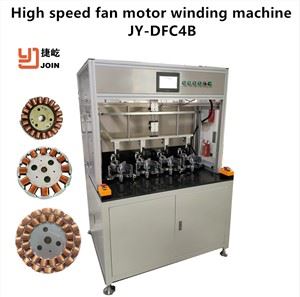
Fan motor rotor flyer winding machine. Micromotor rotor winding machine. For various kind of DC motor rotor out winding, such as fan motor and UAV motor.
Read More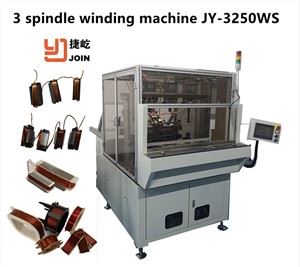
3 spindle winding machine for stator segment coil. For various kind of big segment motor core winding . Mainly for servo motor base size 130#,180# segment winding and EPS motor segment winding. Multi-strand wire winding and big bobbin auto winding.
Read More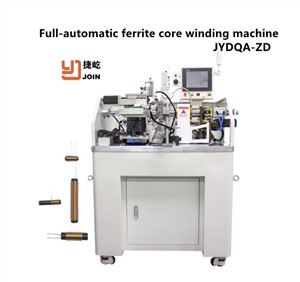
Full automatic ferrite core winding machine.Various kind of ferrite winding, such as ferrite inductance,animal earmark coil.
Read More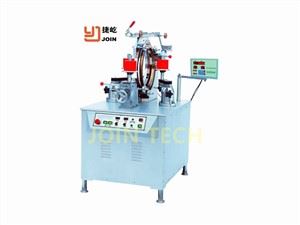
Big size toroid winder.For various kind of big toroidal ring winding
Read More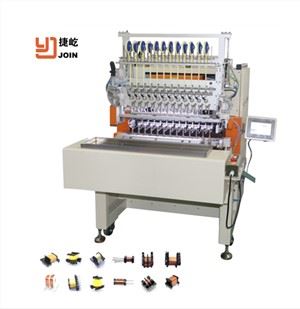
Transformer coil winding and taping machine
Special for the copper wire need to be cut by auto scissor device
Such as transformers with Litz wire or 3 layer insulation wire winding and taping
Transformers with reflex taping and margin taping.
Why Choose Us
Professional Team
Our predecessor was the leader of Chinese mainland winding machine manufacturer OZMA. We have a group of professional team with more than 20 years of design and manufacturing experience in the industry of coil winding and motor winding.
Safety Assurance
JOIN Intelligent Technology quality management system has passed ISO9001 certification.
Our Product
Coil winding machine, motor winding machine, coil taping machine,soldering machine, welding machine, servo press machine and other automatic production line.
Complete After-Sale Service
Pre sales service: Confirm the winding technical then provide solution and quotation. On sales service: Keep touch with the buyer to make sure deliver the machine on time. After sales service: Overseas service, JOIN's engineers setup and test the machine in the buyer's plant, technical support and spare parts.
What is Winding Machine?
A coil winding machine is an apparatus referring to electrical engineering. It is also a prevalent instrument for the manufacturing of electromagnetic coils. Coil windings are useful as a circuit element to deliver a magnetic field to motors, transformers, and generators and is also a valuable tool for microphones and loudspeaker manufacturing.
Winding Machine Features
Web break detection: Many industrial winding machines include sensors that monitor the material being spooled. Many of these sensors work by sending a beam of light toward the material, and detecting whether the light is reflected back.
Automatic splice initiation: Automatic splicing features are used to create clean cuts with no overlap. In general, automatic splicing features are used to enhance productivity, control quality and reduce waste.
Roll changing: Roll-changing features allow users to set maximum diameters for spooling. Once that maximum diameter has been reached, the roll-changing feature swaps out the full spool for a new one.
Actuated knife cut-off: Actuated knife cut-off triggers a blade to cleanly cut the end of the material once a spool has reached its maximum diameter. Quality blades create clean, precise cuts.
Types Of Winding Machine?
Precision Winding Machines: These machines are used for winding fine wires, threads, and fibers onto spools, bobbins, or cones with high precision and accuracy. These machines are commonly used in the textile industry for manufacturing yarn, thread, and other fibers.
Drum Winding Machines: These machines are used for winding heavy wires, cables, and ropes onto large drums or spools. They are commonly used in the wire and cable industry. Drum winding machines are equipped with sensors and controls that monitor the tension, speed, and other parameters to ensure consistent winding quality. These manufacturers design their machines to be durable, reliable, and efficient, with high levels of automation to minimize operator involvement.
Coil Winding Machines: These machines are used for winding coils of wire onto magnetic cores, such as those used in transformers and inductors. These machines are designed to handle a variety of wire sizes and types, including copper, aluminum, and other specialty wires. Coil winding machines can produce coils of different shapes and sizes, including rectangular, cylindrical, and toroidal shapes.
Toroidal Winding Machines: These machines are used for winding wire onto toroidal cores, which are donut-shaped magnetic cores used in transformers, inductors, and other electrical components. Toroidal winding machines use advanced technology to ensure precise winding of the wire onto the core. They are equipped with sensors and controls that monitor tension, speed, and other parameters to ensure consistent winding quality. These machines can handle high-speed winding, producing large quantities of toroidal cores with consistent winding quality.
Rewinding Machines: These machines are used for rewinding rolls of paper, film, and other materials into new rolls with different sizes and lengths. We offer a range of winding machines, from manual to fully automated models, to meet the needs of different applications.
Bobbin Winding Machines: These machines are used for winding yarn, thread, and other fibers onto small bobbins or spools, typically used in the textile industry. They are equipped with sensors and controls that monitor tension, speed, and other parameters to ensure consistent winding quality. Some advanced bobbin winding machines also have the capability to detect and correct for any winding errors, ensuring a high level of winding accuracy.
Cheese Winding Machines: These machines are used for winding yarn or thread onto large cones or cheese-shaped spools, typically used in the textile industry. Cheese winding machines are used in the textile industry for winding yarn onto cylindrical tubes called cheese. These machines are designed to handle a variety of yarn types and sizes, including natural and synthetic fibers, and can produce cheese of different diameters and lengths.
Manual Motor Winding Machine: Manual Motor Coil Winding Machine is a category of tools used for manual winding of the coils on the stator and the rotor in generators, transformers, electric motors, and large capacitors. It is also sometimes used to wind cables around drums.
Armature Winding Machine: An armature winding machine, a piece of equipment, works on electrical appliances’ production. It has many characteristics, such as automatic feeding, automatic tensioning, and it can wind and unwind any altitude of wires. It takes the core, inserts it into a coil, and adds the necessary backing material to make it strong enough for use.
Working Principle Of Coil Winding Machine
Wild Winding:
When we talk about winding, then in this type of wherein the random wire places directs to a wider dispersal which results in the wire length on the coil body. It indicates why wires’ dispersal leads to a wide spectrum of electric ring resistances.
Helical Winding:
When we talk about the spiral binding method of wiring, the wiring is placed in a spiral way in every layer of the machinery. The direction of the moment changes from layer to layer, and often, these wires are found crossing the layers underneath within the given space. In this, a wire compass, the descending layer never brings extant. If the device’s layer is accessed, it becomes tough for the structure to maintain, and it may also create a wild winding.
Orthocyclic Winding:
An Orthocyclic winding, a type of winding, constructs an optimal factor. It is best for the round wires in which the winding of the upper layer is placed within groups, and it is available with the help of the lower layer.
Process of Winding Machine
Linear Winding:
It is a technique in which the winding production takes place with spiralling the wire on a coil constructing appliance, component, a rotating coil body, and coil carrying. The wire comes from a supplier roll, and it contains around 400 kg of copper wire that is enamelled and filled with the help of a guiding tube before starting the whole process of winding the wire mounts on coils to clamp the device.
Flyer Winding:
In this method, dispersal is created with the assistance of a feeding wire/roll/nozzle presented to a flyer. It pivots at a specific space from the coil, and the wire feeds with the assistance of a flyer shaft. The winding process requires components fixed at the inside of the flyer; it is known as mandatory when fixing the wires outside the flyer.
Needle Winding Technology:
It is a winding technology advantageous in curling the pole shoes critical to commuting the multiple three-phase Machines. These motors are shielded with insulation that sustains the course of the turn with the needle winding technique. A needle with a nozzle is found at the right angle to the movement.
Toroidal Core Winding Technology:
In this winding process, the magnetic core braces on the holding spout two functions slow Rotary movement along with the three rubberized moments of connection.
It arranges to store ring orbital wheel at 90 degrees to the magnetic core, which comes at the circumference and introduces it to the epicenter of the magnetic/toroidal core—the wire coils roughly the storage ring of the wires so that they can shut again.
Ways of driving in a winding machine
Surface contact driving
In this process, the grooved drum comes in contact with the package, which is in turn rotated by a motor. Therefore, when the drum is rotated, the package rotates too. As the diameter of the package increases, the speed remains the same.
Direct package driving at a constant speed
Here, the package is placed in a spindle that is rotated by a motor. The package gets motion directly from the motor, and the rate is directly proportional to the diameter.
Direct package driving at variable speed
In this method, the package is placed on the spindle and rotated by a motor. However, the rotational speed of the package increases according to its diameter.
How to select a winding machine
Weight of coil
The dimensions of the coil, together with its weight, need to be considered when choosing a winding machine. If the coil weighs more, the speed at which it rotates on the package will be reduced and vice versa. It is essential to have a machine that can hold the coil’s weight.
Wire diameter (0.01-4.5mm)
Wires have different diameters, and these affect the winding process. Larger wire diameters mean longer rotation times, thus reducing the winding speed and increasing production time.
Coil dimension
A winding machine must use a compatible coil for that specific machine i.e. if the machine is designed for a large coil dimension, the wire must also be of a large dimension. Therefore, you must also consider what coil dimension you require prior to purchase.
Coil winding method
When choosing a winding machine, the method used to wind the coils must also be considered, adjusted according to the desired rate of production. Coils can either wind at high speed with low torque or at a low speed with high torque.
How To Properly Use And Maintain The Winding Machine
A winding machine is a device that winds a wire-like object onto a specific workpiece, usually used for copper wire winding. Most electrical products need to be wound with enameled copper wire (referred to as enameled wire) to make an inductance coil, which can be completed by a winding machine. For example: various motors, hollow cup motors, rotors, stators, pin inductances, chip inductances, transformers, solenoid valves, inductances, resistors, ignition coils, RFID, transformers, audio coils, IC card high and low frequency coils , focusing coils, etc.
In the textile industry, cotton yarns, man-made fiber threads, etc. are often used to wind various yarn groups and yarns suitable for textile machines, and can also be processed by winding machines.
To ensure the normal operation of an automatic winding machine, daily inspection and correct operation are indispensable and important steps. First of all, an equipment manual should be established for daily records and reading of the operation and problems of the automatic winding machine.
When starting work, carefully check the workbench, cable guides and main sliding surfaces. If there are obstacles, tools, impurities, etc., they must be cleaned, wiped clean, and oiled. Carefully check whether the equipment moving mechanism has new pulling, grinding, If there is a bump, notify the equipment technician to check whether the analysis is caused by a fault, and make a record. Check that the safety protection, power supply, limit and other devices should be complete and intact. Check that the electrical distribution box should be closed firmly and the electrical grounding is good. Check whether the accessories of the device are in good condition.
Advantages And Uses Of Cnc Winding Machines
CNC winding machine is a winding equipment using digital control technology. It can automatically complete the winding process through computer programming. The steps to use CNC winding machine are as follows:
1. Determine the specifications and quantity of wire-wound parts.
2. Find a suitable winding program, or use programming software to write the program yourself.
3. Load the winding program into the CNC winding machine control system.
4. Place the winding material on the spool of the CNC winding machine and adjust the parameters of the winding machine.
5. Start the CNC winding machine and start winding. During the winding process, it is necessary to constantly observe the operation of the machine and adjust parameters in time.
Compared with traditional manual winding machines, CNC winding machines have the following advantages:
1. Improve production efficiency. The CNC winding machine can automatically complete the winding process at a high speed, which greatly improves production efficiency.
2. Reduce workers’ workload. The use of CNC winding machines does not require operators to manually wind the wires, which reduces the physical labor of workers and reduces the probability of errors.
3. Reduce production costs. CNC winding machines can reduce manual operations, and the human resources consumed and costs for training and management will also be reduced, making production costs more controllable.
4. Enhance equipment stability. CNC winding machines can ensure winding accuracy and reduce errors, thereby enhancing the stability of the equipment.
5. Wide range of applications. CNC winding machines are widely used in the manufacturing of various electronic products, household appliances, auto parts and other fields, and have very strong applicability.
Hangzhou JOIN Import;Export Co.Ltd is a subsidiary of JOIN TECH, who is mainly responsible for the export of products produced by JOIN TECH ,as well as the import and export of other related equipment, accessories, spare parts and raw materials.
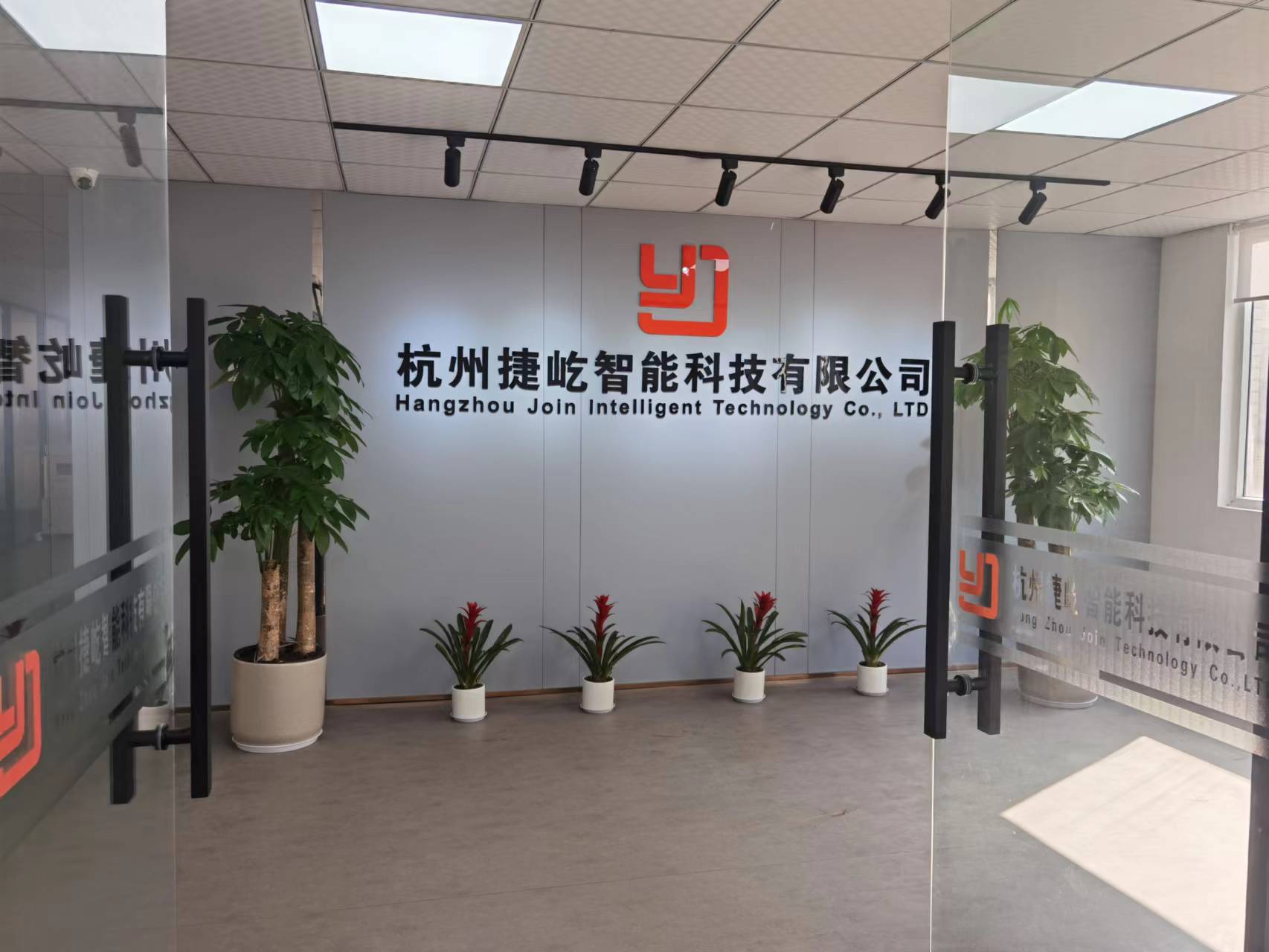
FAQ
What does a winding machine do?
A winding machine or winder is a machine for wrapping string, twine, cord, thread, yarn, rope, wire, ribbon, tape, etc. onto a spool, bobbin, reel, etc.
What are the types of winding machines?
There are two types of winding machines to wind the yarn in cone or cheese form. These are: drum winding machines. precision winding machines.
What is the use of winding?
A winding in electrical machines refers to the arrangement of wires or conductors that are used to generate a magnetic field or to transfer electrical energy. Winding can be done in various ways depending on the specific application.
What does a winder do?
As a winder, your duties include threading freshly dyed yarn into the winding machinery, running a computer program to wind the yarn or wool, and loading the yarn into the winding machine continually until a ball, skein, or hank is complete.
What are the main equipment used for winding?
The equipment mainly includes a parallel winding machine, ring winding machine, stator, and rotor winding machine, textile winding machine, voice coil winding machine, etc.
What machine is used for motor winding?
Types of electric motor winding machines
Motor coil, transformer coil, inductor coil, and choke coil winding machines are examples of electric motor rewinding equipment. Motor winding equipment for motor coils is used to wind single-phase and three-phase motor coils.
What is a wire winding machine?
Electrical coil winding machines are used to wind coils for motors, transformers, inductors, and chokes. Coil winding equipment is used in a variety of wire winding, wire welding, and wire bonding applications.
What is the introduction of winding machine?
Introduction. Winding machines, also called winders, are used in the pulp and paper industry as well as in the textile, steel, and plastic industries. An important characteristic of most winders is that the force acting on the winding material must remain constant.
Why thick copper wire is used in winding?
Usually, thick copper wires are used for secondary winding. Copper has a low resistivity. We must know how thickness reduces resistance. Resistance of a conductor is directly proportional to length of the wire and inversely proportional to area of cross section/thickness.
What are the benefits of automatic winding machine?
Unlike manual winding machines, they have the capability to deliver stable operation. They help reduce the labor requirement for operation. This helps reduce the labor, as well as production costs considerably. These automatic winding machines can be used to wind various types of wires, such as ac, dc, data lines, etc.
What are the advantages of cone winding machine?
This machine is with 2 spindles that can wind single yarn or multiple yarn, such as cotton yarn, wool yarn, chemical fiber, PP yarn, etc. Compared with the single head yarn winding machine, it has the advantages of high speed, high efficiency, low noise, and good winding quality.
What is the purpose of a winding machine?
A winding machine or winder is a machine for wrapping string, twine, cord, thread, yarn, rope, wire, ribbon, tape, etc. onto a spool, bobbin, reel, etc.
What is the use of winding?
A winding in electrical machines refers to the arrangement of wires or conductors that are used to generate a magnetic field or to transfer electrical energy. Winding can be done in various ways depending on the specific application.
What is the process of winding machine?
The working principle of the winding machine is to change the package and increase the yarn package Increase the yarn capacity and remove the defects on the yarn to improve the quality of the yarn. The main task of the winder is to wind and connect the bobbins with less capacity.
What is soft winding machine?
The main object of soft winding is preparing the yarn package for the subsequent yarn dyeing process by controlling the density of the package. A traversing motion is giving to the yarn while winding which impart lower density of package. INPUT : Cone package. OUTPUT : Perforated cheese package.
What is the speed of winding machine?
There are various configurations of speed ranges, up to 9,000 rpm (depending machine version). This produces fast cycle time for high turn primary windings.
What is automatic coil winding machine?
High efficiency is its feature. The machine automatically put the coil into transfer former orderly, especially suitable for high production capacity requirement, high slot filling rate, small slot opening stator coil winding.
How do coil winding machines work?
Coil Winding Methods and Machines
Machines that wind coils in a helix create layers and switch directions, moving forward and backward. However, this method only works for a small number of layers because, when it reaches a certain limit, the structure becomes too tight to contain, especially with fine wires.
What is a motor winding coil called?
Traditionally, the motor coils that produce the magnetic field are called “field coils” while the coils and the solid core are called the “armature." Generator coils are designed for use with generators, machines that convert mechanical energy into electrical energy.
What is the function of the motor winding?
The motor winding refers to the type of winding of the electrical conductor for generating a magnetic field used to drive the rotors in an electric motor – e.g. a servo motor. The design determines the available torque, the electromagnetic force in the system, the electrical resistance, and therefore the application.